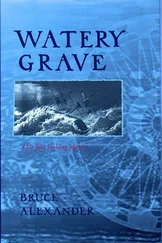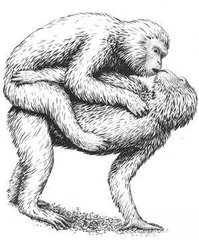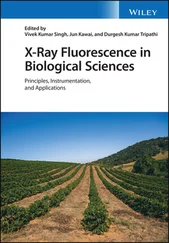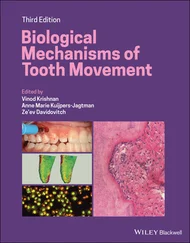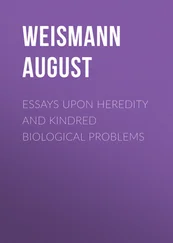Nevertheless, it is important to recognize that a precedent has been established within the zoological discourse for using the less “neutral” (or more culture-bound) designations. The words gay and lesbian are applied by scientists to animals and their behaviors in a number of scholarly publications spanning the past quarter century, including three separate instantiations in the prestigious journal Nature. As in Biological Exuberance, lesbian is more widely used than gay, e.g., “lesbian females” in Fruit Flies (Cook 1975), a “lesbian pair” in Black-billed Magpies (Baeyens 1979), a Common Chimpanzee behaving “in a lesbian fashion” (de Waal 1982),“gay” Snow Geese (Diamond 1989), “gay courtship” in Long-legged Flies (Dyte 1989), “lesbian behavior” in Bonobos (Kano 1992), “lesbian pairs” in Black Stilts (Reed 1993), “lesbian females” in Lesser Flamingos (Alraun and Hewston 1997), “lesbian copulations” in Oystercatchers (Heg and van Treuren 1998); see chapter 3. As for other terms such as transvestism and transsexual(ity), these are also used in the zoological literature with meanings largely divorced from their human connotations (though other labels are employed as well, such as male/female mimicry or sequential hermaphroditism ).
It should also be pointed out that the term homosexual —which many people feel is preferable to gay or lesbian when referring to animals—is not devoid of anthropomorphism. It too is a culture-specific, historical construction with very particular human connotations (the same for other putatively “neutral” designations such as hermaphroditism, mimicry, etc.). In fact, a wide variety of terms used routinely in the zoological literature—e.g., courtship, parent(ing), monogamy, adoption, consort(ship) or, for that matter, heterosexual, male, etc.—carry the same baggage of human referents. In addition, the range of variation between (and within) animal species in behaviors that are labeled with the same terms is sometimes as great as—if not greater than—the variation in corresponding behaviors between animals and people. In other words, the differences between “mothers” (or “homosexual copulations”) in flies and chimpanzees probably equal if not exceed the differences between “mothers” (or “homosexual copulations”) in chimpanzees and humans. Yet such terms are applied to a wide range of animals with the understanding that a given word can have variant meanings in different contexts, and that the human connotations are specifically not implied when such vocabulary is used in a zoological context. This issue is discussed more fully in chapter 3, where I offer a careful rationale for the continued use of such terms—specifically with reference to the supposedly anthropomorphic/centric label homosexual and the historical reluctance of zoologists to utilize even this designation.
Furthermore, within this book such terminology is not used in a vacuum: it is accompanied by explicit discussion of the meanings of all such labels when applied to animals—including overt disavowal of their human connotations and extensive consideration of the inappropriateness of making unwarranted human-animal comparisons (see chapter 2). In order to contextualize the discussion, I also address a number of related issues such as the precedent for employing these words within the zoological literature; the problems inherent in any choice of terminology; and the widespread use within scientific discourse of anthropomorphic labels and descriptions for heterosexual animals and behaviors. Finally and perhaps most importantly, I point out in Biological Exuberance that terminological debates themselves are not ahistorical—they reflect and embody very specific cultural and historical streams both within the scientific community and in society at large; they recapitulate (and lag behind) debates regarding “appropriate” terminology for homosexuality in humans; and the effect of such debates within the scientific discourse has often been to distract from the phenomena designated by such terms rather than to clarify them.
Virtually no terminology for animal behavior—particularly sexual behavior—is entirely free of human (cultural, historical, etc.) associations. When confronted with this situation, we have two options: construct an alternative vocabulary of relatively opaque labels and unwieldy circumlocutions that attempts to avoid such bias (but inevitably falls short of this ideal); or use the already available terms with careful qualification of their meanings and an understanding of their historical context, such that they become uncoupled from their anthropomorphic connotations. In Biological Exuberance, I opt for the latter.
The book is organized into two complementary sections. Part 1, A Polysexual, Polygendered World , offers a wide-ranging exploration of all aspects of animal homosexuality and transgender: their diversity, history, and meanings. Part 2, A Wondrous Bestiary, presents a series of profiles of individual homosexual, bisexual, and transgendered animals. Where the first part of the book follows a linear, narrative progression, part 2 is organized in a nonlinear, reference format. The two halves of the book are linked via the animals themselves: throughout part 1, the reader is referred to specific animals that are profiled in part 2 and may at any point consult those profiles to supplement the narrative (names of profiled species or groups of related species are capitalized to indicate their inclusion in part 2 and the appendix). Alternatively, those readers more interested in a general cross-species survey or the interpretive/historical aspect can focus almost exclusively on part 1, while those who wish to gain a more in-depth understanding of particular animals can focus primarily on part 2. This dual structure allows the reader to access information on animal homosexuality/transgender in a variety of ways, suited to his or her own reading style.
Chapter 1, “The Birds and the Bees,” presents a broad overview of animal homosexuality and transgender, exploring the full range of behaviors and phenomena covered by these terms. Comparisons between animal and human homosexuality are the focus of chapter 2, “Humanistic Animals, Animalistic Humans,” including a discussion of the advisability and implications of making such comparisons in the first place. This chapter also exposes the false dichotomy of the “nature versus nurture” debate, by examining the sociocultural dimensions of homosexuality within animal communities. Next, the history of the scientific study of animal homosexuality is chronicled in chapter 3, “Two Hundred Years of Looking at Homosexual Wildlife.” This includes documentation of systematic prejudices within the field of zoology in dealing with this subject, which have often hampered our understanding of the phenomenon. Chapter 4, “Explaining (Away) Animal Homosexuality,” continues the historical perspective by examining the many attempts to interpret and determine the “function” or “cause” of animal homosexuality and transgender. Most such efforts to find an “explanation” have failed outright or are fundamentally misguided—particularly when they try to show how homosexuality might contribute to heterosexual reproduction. In the next chapter, “Not for Breeding Only,” animal life and sexuality are shown not to be organized exclusively around reproduction. A wide range of nonprocreative heterosexual activities are described and exemplified, as are the diverse ways that homosexual, bisexual, heterosexual, and transgendered animals structure their relationship to breeding.
The final chapter of part 1, “A New Paradigm: Biological Exuberance,” calls for a radical rethinking of the way we view the natural world. This revisioning begins with an exploration of another, alternative set of human interpretations: traditional beliefs about animal homosexuality/transgender in indigenous cultures. Particular attention is paid to the ways in which these ideas are relevant to contemporary scientific inquiry. As it turns out, Western science has a lot to learn from aboriginal cultures about systems of gender and sexuality. In the remainder of the chapter, a synthesis of a number of “new” sciences is suggested, including chaos theory, post-Darwinian evolutionary theorizing, biodiversity studies, and the theory of General Economy. The approach taken throughout this chapter is exploratory rather than explanatory. Ultimately, this synthesis leads to a worldview in which animal homosexuality and other nonreproductive behaviors suddenly “make sense,” while still remaining, paradoxically, “inexplicable”—a worldview that is also remarkably consistent with indigenous perspectives on gender and sexuality.
Читать дальше




